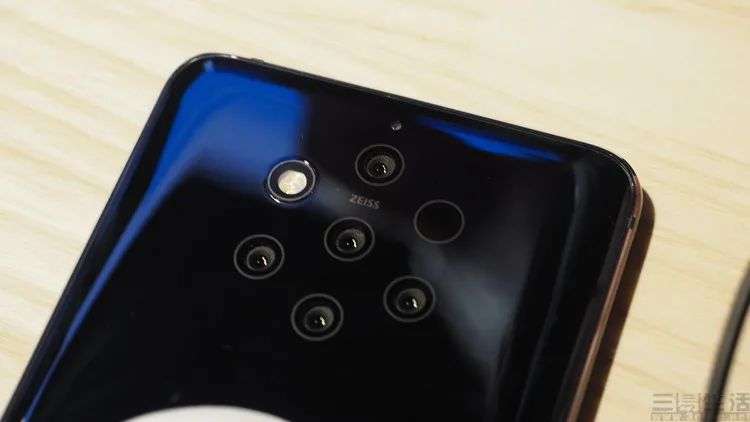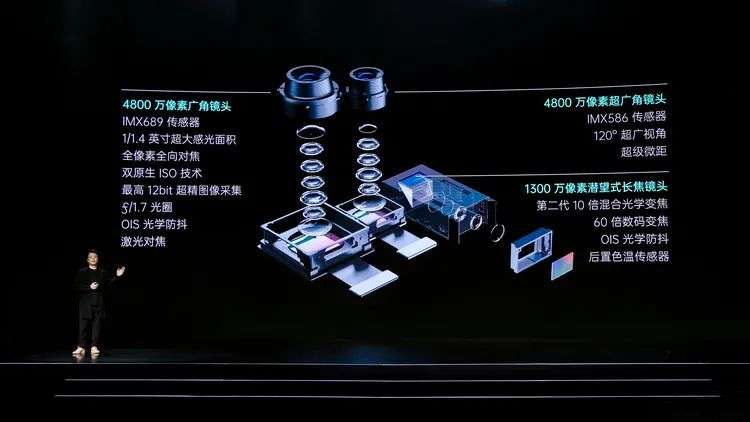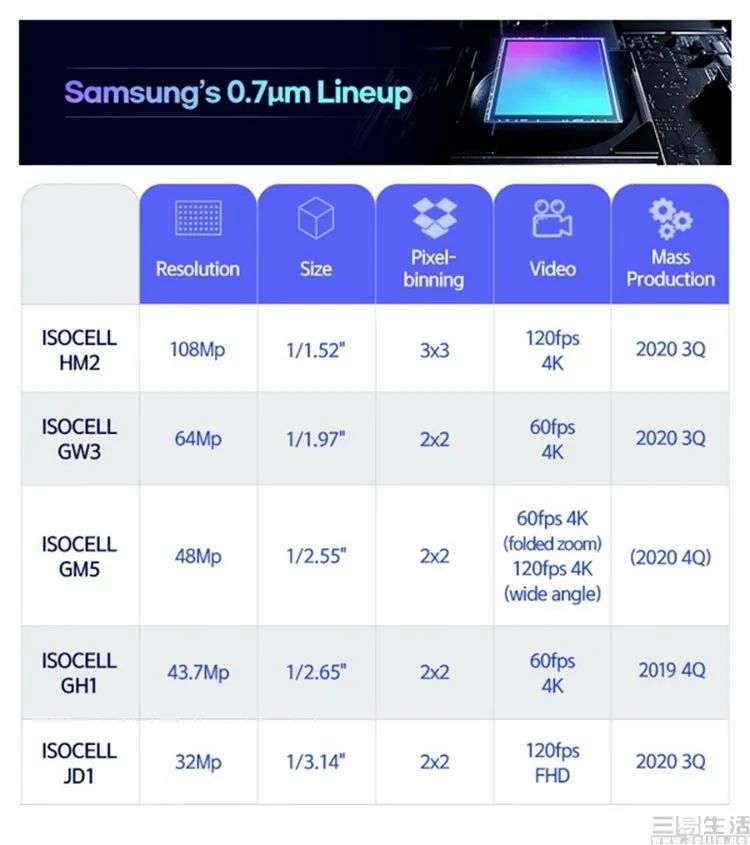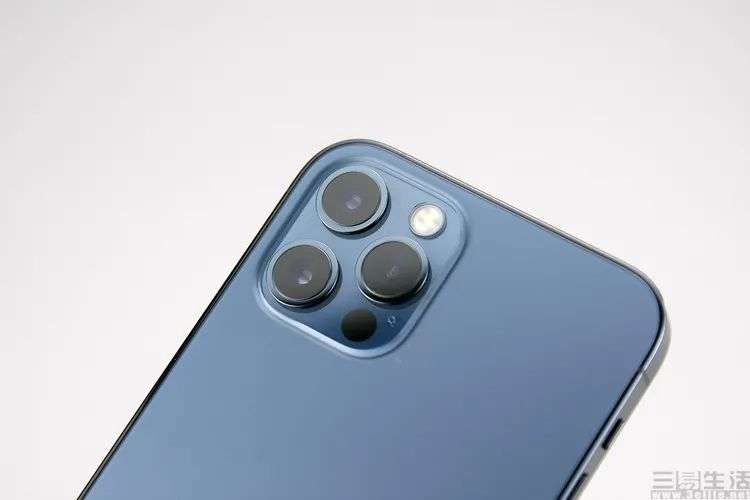When the main camera is generally very strong, the next step may also usher in a substantial increase in the secondary camera.
Editor’s note: This article is from the WeChat official account “Sanyi Life” (ID: IT-3eLife)< /a>, the author Sanyi bacteria.
As we all know, imaging capabilities have now become the first feature that many consumers consider when buying a smartphone. This also means that, for mobile phone manufacturers, it is necessary to constantly innovate in image functions, and even have to conduct an “arms race” in materials, algorithms, and design. In fact, it has become the current mobile phone industry market competition. An important aspect.
At this point, if you have been paying attention to the changes in the mobile phone industry in recent years, you may find that since 2019, “higher pixels”, “larger main camera size”, and “more multiple shots” have basically been summarized The mainstream pattern of competition in the entire industry. For example, the main camera of flagship smartphone products has increased from 12 million pixels, 40 million pixels, to 48 million pixels, 64 million pixels, or even 108 million pixels in just two years; another example In terms of the number of cameras, many flagship models were still proud of the dual-camera and triple-camera zoom designs at the beginning of 2019. Now, even many thousand-yuan models have achieved the “standard” four-camera.
Then the question arises. For the smartphone market in 2021, what direction will their image development take? Will they continue to stack pixels, stack lens numbers, and stack main camera specifications?
At least from the information currently known, the imaging capabilities of flagship smartphones in 2021 may be expected to get rid of the idea of simply focusing on the number of main cameras and lenses, and begin to develop in a more pragmatic direction. For example, take a good look at the sub-photographs that are not so important now.
In this regard, the first example is not the new phone in 2021, but the few flagship products that have been released in early 2020. For example, OPPO’s Find X2 Pro, in addition to the custom 48-megapixel “full-pixel omnidirectional focus” main camera, also uses the IMX586 48-megapixel CMOS that is common on other models as an ultra-wide-angle secondary camera.
For example, Samsung’s Galaxy S20 and Galaxy S20+, the main camera is a newly developed ultra-large 12-megapixel CMOS, while the ultra-wide-angle secondary camera is a 64-megapixel CMOS. In the higher-end Galaxy On the S20 Ultra, a periscope zoom lens of up to 48 million pixels is used. Compared with the common 8 million pixel solution, this periscope zoom camera obviously has a larger base, higher pixels, and better light sensitivity. Strong advantage.
Of course, these products use the CMOS solution that is often used for the main camera on other models when carrying out a special “secondary camera enhancement design”. This not only means that the cost of their high-specification sub-cameras will be very high, but it also means that these special sub-cameras require extremely complex lens coordination to allow the outsole CMOS that is not originally suitable for ultra-wide-angle/ultra-telephoto purposes to work properly. This will further increase the size of the lens module, causing difficulties in the design of the internal structure of the mobile phone, obvious protrusion of the external lens, and higher costs and prices.
Obviously, at this point, everyone should already understand what is going on. That’s right, the reason why we dare to say that the design of smartphones in 2021 is likely to be based on (generally) enhanced sub-camera performance. The reason is that upstream suppliers have already made preparations early this time.
In mid-September 2020, Samsung Semiconductor suddenly launched a number of new CMOS products, including the 108-megapixel S5KHM2, the 64-megapixel S5KGW3, and the 48-megapixel S5KGM5, and S5KJD1 with 32 million pixels. These four new CMOS models have two very eye-catching features in common. One is that they all use a new 0.7μm ultra-small pixel design, which makes the size of the sensor itself significantly smaller than the previous generation model, and can be adapted to thinner Lens; another point is that when the official launch of these new CMOS, they directly indicate that they can not only be used as the main camera, but also optimized for different sub-camera purposes, such as the new 108 million pixels and 64 million pixels. Both solutions can be used for front shots, and the new 48-megapixel solution is optimized for the use of ultra-wide-angle/ultra-telephoto lenses.
What does this mean? To put it simply, the upstream supplier directly paved the way and told the mobile phone manufacturer “your deputy camera should also be upgraded.”
Some friends may say that although Samsung has given new off-the-shelf solutions, mobile phone manufacturers may not necessarily buy it out of cost considerations. What motives do they have to start to “make money” on the secondary camera?
Don’t tell me, it’s true. According to the latest revelations from analyst Ming-Chi Kuo, Apple also got a new sub-camera CMOS solution from the supplier (this time it should be Sony), and will bring ultra-wide-angle sub-cameras on the iPhone 13 in 2021. Significantly enhanced. For the Android camp manufacturers, the fact that “Apple wants to enhance the experience of sub-camera” is enough in itself to become the driving force for them to catch up.
In other words, “multiple shots” like 48MP + 8MP + 2MP + 2MP may become fewer in 2021, and the sub-camera specifications are higher, super wide-angle and super New phones with significantly improved telephoto resolution are also expected to give users a more comprehensive “multi-camera” experience.





